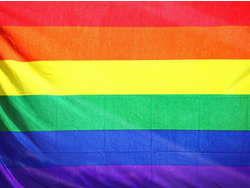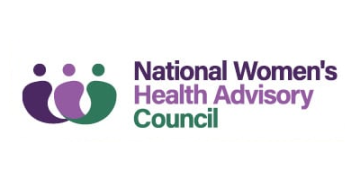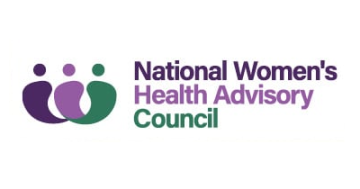Raymond Trau, Jane O’Leary and Cathy Brown* say creating an inclusive workplace for LGBTIQ+ people will lead to a more productive and engaged workforce.

Photo: Sharon McCutcheon
More and more employers are providing workplace protections for LGBTIQ+ people.
It’s clear that when workers bring their authentic selves to work, they are more productive and engaged.
Research shows that coming out increases job satisfaction, intention to stay, and emotional support from co-workers, whereas staying “in the closet” has costs — for the individual and their employer.
And yet, many people are still reluctant to come out at work.
We surveyed 1,614 LGBTIQ+ Australian workers and held focus groups with 60 participants across various industries.
We found that 68 per cent of respondents are not out to everyone at work.
We know that when LGBTIQ+ people work in a safe environment, they are more willing to come out.
But while workplace policies and practices are critical, the decision to come out at work is a complex and personal one.
Our research challenges myths that are drawn from common assumptions about coming out.
Myth #1: Coming out at work is not a big deal
Though the LGBTIQ+ community has seen big wins in the past few years, coming out is still potentially dangerous and can be deadly for trans and gender diverse people.
The LGBTIQ+ rights movement is still very much in progress, and this factors into some workplace cultures and how comfortable people may feel coming out.
Myth #2: Coming out is similar for all LGBTIQ+ people
The LGBTIQ+ community and their workplace experiences are diverse.
In Australia, there has been a gradual transformation in gay and lesbian rights over the past 40 years, which has also seen support for and protections of gay and lesbian people at work.
However, trans/gender diverse workers have been historically overlooked.
They are often less willing to come out at work due to fears of discrimination and social exclusion.
Our research finds 49 per cent of trans and gender diverse workers try to conceal their identity from colleagues, compared to only 13 per cent of LGB workers.
Myth #3: LGBTIQ+ workers have control over whether to come out at work
For some LGBTIQ+ workers, living authentically at work remains an aspiration.
While almost three-quarters of our respondents indicated coming out is important to them, only one-third are out to everyone at work, suggesting that not everyone who wants to be out feels comfortable being out.
Some individuals are outed against their will, while others are forced to come out because of workplace policies.
In fact, research shows that transgender people going through the transition process often have to come out to co-workers, causing great anxiety and distress.
For some transgender people, living authentically means keeping their gender history private.
Myth #4: Coming out has nothing to do with work
Our research reveals that people who are able to come out at work are happier.
Those who are completely out at work are significantly more satisfied with their job (29 per cent versus 16 per cent) than those who aren’t and enthusiastic about their job (40 per cent versus 26 per cent).
Other research finds that having a double life — being out in private life but not at work — increases social stress and depression.
Because workplaces are where people share their personal experiences, coming out — and feeling safe enough to do so — is about something as simple as participating in conversations without having a guard up or editing.
Myth #5: Coming out at work happens just once
Coming out is actually a repetitive process.
It occurs not just once, but on multiple occasions.
For instance, a bisexual woman may come out to her immediate manager when she is first starting a job, but also later, when she meets new co-workers, other managers, or clients.
Myth #6: There is only one way to come out
There is a range of ways LGBTIQ+ people can signal their identity or hide it.
For instance, 47 per cent of our respondents display objects like photographs or magazines to reveal their identity at work.
Myth #7: People are scared to come out just because of career risks
Coming out is a constant cost–benefit analysis and requires weighing different risks.
A lack of support from co-workers and supervisors, and past experiences of discrimination, often prevent LGB workers from coming out.
But our research also shows that respondents are more concerned about social exclusion than career penalty.
So, what can organisations do to develop a space in which living authentically is an everyday reality for LGBTIQ+ workers?
Leadership makes all the difference.
Respondents whose leaders publicly support LGBTIQ+ issues are 50 per cent more likely to be out to everyone at work.
We recommend leaders:
- Develop a working partnership with leaders who have a different sexual orientation or gender identity than your own.
- Make LGBTIQ+ inclusion visible in your organisation.
- Learn about all members of the LGBTIQ+ community.
- Check your assumptions to see if they hinder LGBTIQ+ inclusion.
- Avoid non-inclusive or presumptuous language, like “that’s so gay,” asking women about their “husbands” and men about their “wives,” or assigning someone a gender pronoun.
Finally, it’s not just about leadership.
Organisational policies and strategies that recognise the specific needs of, and sometimes just the existence of LGBTIQ+ people, are also key to establishing an inclusive environment.
We recommend employers:
- Include sexual orientation, gender identity, and intersex status in diversity and inclusion policies.
- Review workplace forms to ensure they are inclusive, and have an option for people who don’t identify as male or female.
- Make some bathrooms gender-neutral.
LGBTIQ+ people can be themselves and have a real choice about coming out at work when their employer and people at work are supportive.
Being aware of the common assumptions and the challenges people face is the first step toward building a work environment that is inclusive and safe for LGBTIQ+ people.
* Raymond Trau is a Lecturer at RMIT University in Melbourne.
Jane O’Leary is a Research Director of the Diversity Council Australia.
Cathy Brown is a Policy and Research Manager at the Diversity Council Australia.
This article first appeared at hbr.org.











